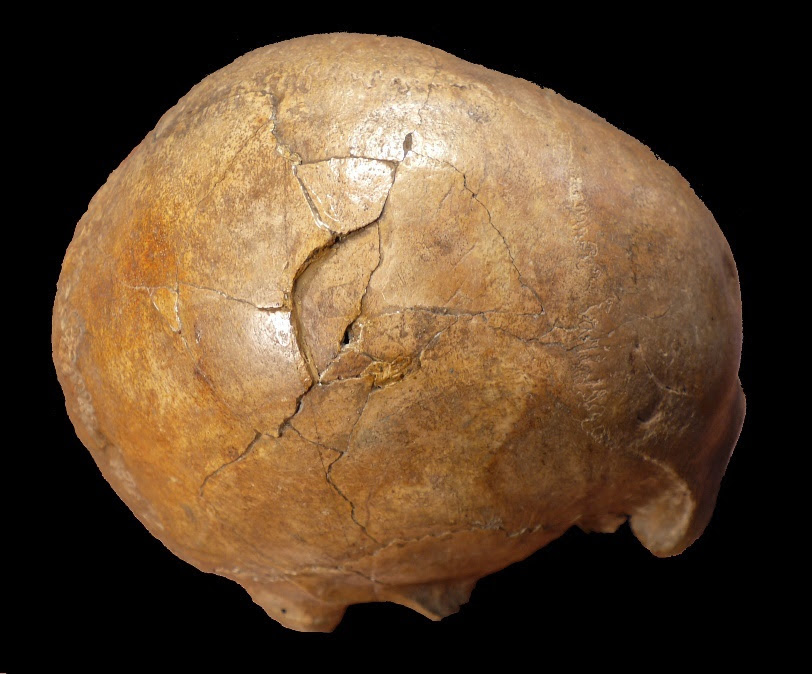Cold Case Closed: Scientists Pin 33,000-Year-Old Murder on a Left-Handed Paleo Killer

One of the coldest cases on record — a man's mysterious death about 33,000 years ago — has finally been solved: a left-handed murderer killed the man by smashing his skull with two consecutive blows, a new study finds.
What was the murder weapon? A bat-like object, meaning the victim was likely clubbed to death, the researchers found.
"What our study shows is that this man was killed as a result of blunt force trauma" to his skull, said study senior author Katerina Harvati, a professor of paleoanthropology at the University of Tübingen in Germany. "The extent of the injuries that he sustained would have led to death. As to how or why this came about, we can only speculate." [Back to the Stone Age: 17 Key Milestones in Paleolithic Life]
All that's left of the ancient murder victim is a skull, known as the Cioclovina calvaria (a calvaria is a skullcap). In 1941, phosphate miners found it in the Pestera Cioclovina cave, in South Transylvania, Romania, along with stone tools from the Upper Palaeolithic Aurignacian culture and several cave bear fossils.
Other studies have shown that the skull belonged to an adult man. However, researchers couldn't agree on how this man's injuries were inflicted or whether the skull was damaged before or after he died. So, a team of international researchers from Greece, Romania and Germany took another look at it.
"The Cioclovina individual is particularly important, as it is one of the earliest and relatively complete skulls of modern Europeans from the Upper Paleolithic period (a period starting around 40,000 to 45,000 years, when the major dispersal of modern humans in Europe occurred)," Harvati told Live Science in an email. "Human remains from this period are very rare and often very fragmentary."
Harvati and her team took a CT scan of the skull to get a detailed look at its two fractures. Then, they took 12 synthetic bone spheres and subjected them to different traumas, dropping them from heights (to model a possible fall), hitting them with rocks and clubbing them with bats.
Get the world’s most fascinating discoveries delivered straight to your inbox.
"Our results clearly showed that the fracture patterns observed on this skull could not have been produced after death, or from an accidental fall," Harvati said. "Instead, they closely matched with the expected patterns for blunt force trauma (i.e., trauma inflicted with a blunt instrument, such as a club, for example) to the head."
The locations of the injuries also revealed clues about the murderer. It appears that the murderer was face-to-face with the victim during the assault and likely a lefty, because the injury was on the skull's right side, "although the possibility of [the murderer] holding the object with both hands cannot be dismissed," the researchers wrote in the study.
During the Upper Paleolithic, people were creative; they developed cultural and technological innovation, symbolic behavior and artistic expression. But their world was a violent place. "We show that they were also capable of murder," Harvati said.
It's not surprising that the Upper Paleolithic was a violent time, but "this is still a very valuable study," said Niels Nørkjær Johannsen, an associate professor in the Department of Archaeology and Heritage Studies at Aarhus University, in Denmark, who was not involved with the research.
Some people might say "'Isn't that a matter of course?'" that the man died of violence, Johannsen told Live Science. But it's important not to simply make assumptions about the past. "They really take the necessary care and do all this work to say 'this is certainly interpersonal violence.' It's as certain as these things get in these types of sciences."
The study was published online today (July 3) in the journal PLOS ONE.
- Photos: 2 Paleolithic Boys Were Buried with Fox Teeth and Spears
- In Photos: The World's Oldest Cave Art
- Photos: Ancient Human Remains from Beneath the North Sea
Originally published on Live Science.

Laura is the managing editor at Live Science. She also runs the archaeology section and the Life's Little Mysteries series. Her work has appeared in The New York Times, Scholastic, Popular Science and Spectrum, a site on autism research. She has won multiple awards from the Society of Professional Journalists and the Washington Newspaper Publishers Association for her reporting at a weekly newspaper near Seattle. Laura holds a bachelor's degree in English literature and psychology from Washington University in St. Louis and a master's degree in science writing from NYU.


